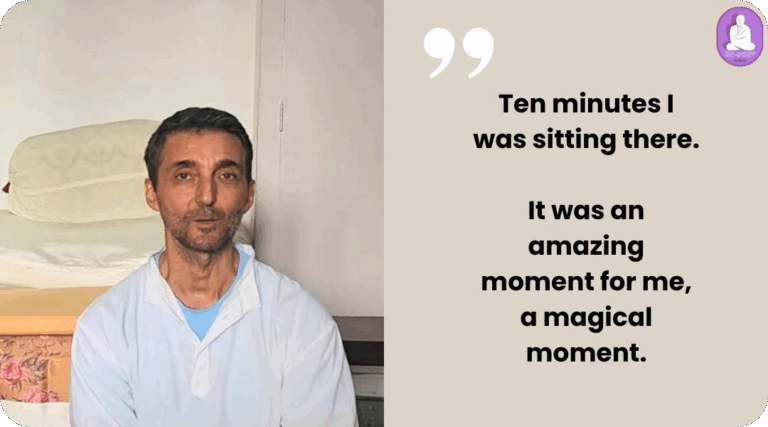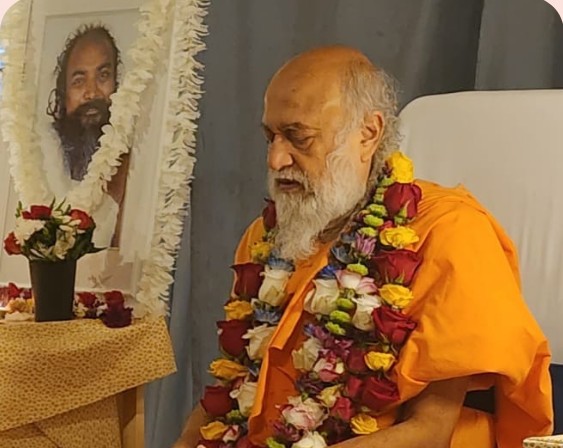Pious they were. Very devotional and God-fearing. The following is an account of the history based on a personal diary of Kashipatayya. He is our Babaji’s grand father’s great-grandfather. Baba is a seventh generation child of this Gentleman. Kashipatayya lived during the period of 1784 to 1856, nearly two hundred years ago.
They preferred poverty rather than deviating from the Path of honesty and devotion. In his diary Kashipatayya traces eight generations before him to have migrated from the Pilgrim town of Kancheepuram, near Chennai, the capital of the State of Tamil Nadu in South India. They followed the philosophy of Adi Shankaracharya. Economical situations forced them to leave the place. They came and settled in a village called Devaraya Samudram in Kolar District of the state of Karnataka in South India.
Though Kashipatayya is well educated for that time, owing to his honesty he has to face the wrath of some wicked people. Undeterred he goes from place to place in search of a job. Finally he reaches the court of Mysore. The King of Mysore is pleased by the honesty and hard work of Kashipatayya and grants him some villages with fertile lands.
Shamanna (the future Eswara Poundarika Dikshitar) is born to Kashipatayya in 1819. He gets educated in Sanskrit and the Vedas. From childhood this boy dreams of becoming a monk, but perhaps to respect his parent’s wishes, gets married. He lives a life of total detachment and devotion. One day in 1848 at the age of 29, he has a strange vision where he sees four Agnis (presiding deities of the concept of fire) in the four corners of his house. A dazzling Divine Form asks him to perform Agnishta Homa (fire ceremony) and to feed the poor and needy for nine days. He knows nothing about Agnishta Homa. Later when he enquires about it, he understands that Agnishta Homa is performed for nine days to propitiate Lord Shiva for peace and liberation. He goes to Mysore to meet his father and tell him about his experience. His father feels it is beyond his financial capacity to undertake such a fire ceremony (Homa). Somehow the news reaches the king of Mysore and he invites them to the court and hears the account of the experience that the son has had. After hearing some mantras from the son of Kashipatayya, the King is pleased and promises to help financially. Thus with the help of the king, Agnishta Homa is performed for nine days with all the necessary fasting and devotion. Shamanna honors Saints and learned scholars during the Homam. Every day mass- feeding is organized for the devotional, the poor and needy as well. Shamanna gives gifts to the poor and needy.
After a year, around 1849, once again Shamanna has another amazing vision Of Lord Shiva in the midst of four dazzling Agnis (fire deity), while asleep. Lord Shiva asks him to do Poundarika Homam. When he wants to ask from where the financial help can come,the dream ends and he wakes up. Wondering and puzzled, the whole day is spent in inquiry of the Homam. Shamanna understands that this Poundarika Homam is done for forty days with fasting (only a glass of milk to be taken in the night). Total devotion, mass feeding to be done to all, charity to be done to the poor and needy. Some make fun of Shamanna that he has gone insane to be getting all sorts of dreams. People tell him to ask Lord Shiva in his dream as to where can he get the financial support. But Shamanna does not lose faith. Fully confident that if it is Lord Shiva who wants the Homam to be done, definitely The Divine would show a way out. The whole day remembering The Divine Shiva only, he goes to sleep. The dream was a wonder for him and it happens again. Shiva appears with the same Agnis (fire deity) and guides him to go to next village and approach a merchant. The dream ends and Shamanna wakes up.
The merchant was a known miser and money-lender. Some elders advise him not to go to that miser and get involved, because they say he would never help but may lend some money and bind Shamanna to some contract. But Shamanna has total faith in The Lord’s words. Finally Shamanna goes there to the merchant. To his surprise the merchant also has had a dream where Lord Shiva had appeared to order him to help the pious brahmin who would be coming from the next village. At first the merchant does not take it seriously but is surprised when the pious brahmin turns up.
Shamanna’s detachment towords the worldly life and devotion to Shiva increases. He is full of emotions and it is an amazing play of the devotion, which finally become a sadhana for him to leave the worldly life and take to sannyas (monkhood). The merchant becomes a devotee with change of mind and pledges to help the Homam and serve the poor. Thus the 41 day Poundarika Homam takes place where saints and scholars come to participate. People come from all over to witness the great event in thousands and all are fed. Daily mass feeding and gifts are given to poor and needy. Shamanna accompanied by his pious wife, fasting with devotion, perform this great Homam. According to knowledgeable village elders this type of Homam is performed at four or five places in India in the recent history. Kashipatayya has recorded this in his diary also.
After this Shamanna came to be known as ESHWARA POUNDARIKA DIKSHITAR. ‘Eshwara’ is another of Lord Shiva’s name. As Lord Shiva had initiated him to do this Homam, he came to be known by this name. The king of Mysore called him in this name and showed reverence. Later this pious son of Lord Shiva went to the pilgrimage town of Kashi where he became a monk and spent the rest of his life in tapas sadhana and service to the poor and devotional. Eshwara Poundarika Dikshitar is said to have attained Mahasamadhi around1868-69.
Descendants of this pious Sage lived a simple life of devotion and service to the poor and needy. Babaji’s Grandfather was known as YAGNA NARAYANA DIKSHITAR. Yagna means fire sacrifice (Homam). He also performed Homas called Agnishta and Garuda Chayana, which were done continuously for 18 days. Because of their charitable nature they always remained poor and simple . BABAJI’S FATHER SHANKARA DIKSHITAR was born in 1905 as the last child of Yagna Narayana Dikshitar. Leaving the young baby boy to more hardships in life, Yagna Narayana Dikshitar died in 1905. The boy Shankara showed enormous Determination, Hard Work and Honesty. He went on to become a charitable doctor to serve the humanity and saw only GOD in every Heart.
This story of Babaji’s Great-Grandfather and Lord Shiva’s Divine Play had a great influence on Babaji’s DEVOTIONAL LIFE.
Copyright © 2001 SRBY, All rights reserved.






























